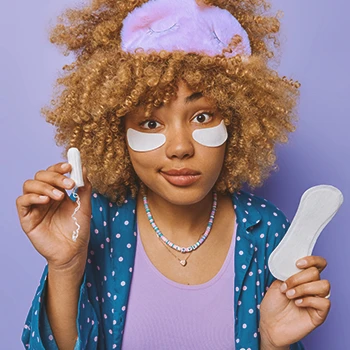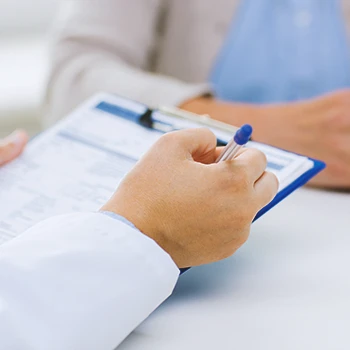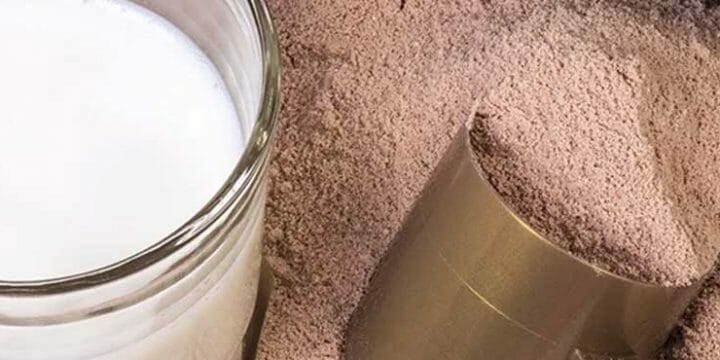As an experienced medical doctor, I've witnessed firsthand how the menstrual cycle at different ages can impact testosterone levels in women.
This article, born from both my clinical observations and extensive research, delves into the nuances of how testosterone fluctuates during periods.
It's crucial to understand these hormonal changes, as they play a significant role in women's health.
Additionally, I'll discuss why boosting testosterone is sometimes necessary and beneficial for women, offering insights into this often-overlooked aspect of female hormonal health.
Quick Summary
- Women produce testosterone hormone levels during their periods, especially during the mid-phase.
- Some signs of high testosterone levels in women range from mood changes, loss of libido, and increased hair growth.
- Research by the Journal of Clinical Endocrinology and Metabolism shows that testosterone and estrogen levels increase in the days leading to ovulation
- I've found that a holistic approach, encompassing diet, exercise, and stress management, is essential for optimal hormonal health during the menstrual cycle.
Is Testosterone Higher During the Menstrual Cycle?

Yes, testosterone is higher during the menstrual cycle, especially in the mid-phase.
Research by the Journal of Clinical Endocrinology and Metabolism suggests that from day eight until ovulation, both testosterone and estrogen levels rise [1].
They then peak in the third week before slowly going down again.
More details on the weekly hormone change shortly.
These testosterone fluctuations are perfectly normal and play a key role in fertility, sex drive, and even mental health.
But it’s important to understand that as women get older, these hormonal fluctuations can cause longer-lasting imbalances, as shown by MedlinePlus [2].
“Women with low body fat often do not produce sufficient amounts of sex hormones. This can be a problem for women such as athletes, models, and gymnasts.”
- Debra Fulghum Bruce, PhD, WebMD.com
In my medical practice, I've seen how unchecked hormonal fluctuations can lead to issues like fatigue, low libido, and even heart disease or insulin resistance in women.
Diet plays a crucial role in this balance, with foods rich in phytoestrogens or antioxidants helping to moderate these fluctuations.
Monitoring estrogen and testosterone levels, as well as their ratio, is vital for understanding and managing hormonal health effectively.
The Female Hormone Cycle

According to reports by Hormonology. while the female menstrual cycle varies between individuals, this is typically what happens to testosterone and estrogen [3].
Week 1
On the first day of the period, estrogen levels are at their lowest, often leading to increased pain sensitivity due to impacted serotonin levels, as noted by the Healing Works Foundation [4].
In my practice, I've observed that as hormones rebalance over the week, many patients experience less menstrual pain.
I recommend light exercise, including strength training, which has proven beneficial for both pain relief and overall hormonal balance during this phase.
Week 2
During the second week, estrogen and testosterone rise, and it’s these changes in hormones that ultimately lead to ovulation and increased cervical fluid at the end of the week, as per Cleveland Clinic [5].
The high levels of testosterone may also make this the most effective week for female athletes to work on their strength and lean mass.
That's because testosterone's psychological effects, such as improved mood and reduced stress, can enhance athletic performance and motivation during training sessions.
Week 3
In week 3, testosterone levels peak and start going down, while progesterone and estrogen rise [6]. The fluctuations in the three hormones lead to those all too common pre-PMS symptoms.
Week 4
This is when estrogen and progesterone levels drop substantially. And with less estrogen and progesterone, the Office of Women's Health suggests that you're more likely to get into a bad mood and start feeling some premenstrual pain during this stage [7].
It’s typically the final stage just before the first day of your period.
Do Females Need to Boost Testosterone?

Yes, sometimes females need to boost testosterone, especially if there is a lasting imbalance. In the female body, it’s the ovaries and adrenal glands that produce testosterone.
In my practice, I've observed that imbalances in testosterone levels can cause health issues ranging from cancer risks to weight gain, as highlighted by Medical News Today [8].
Regular testosterone tests are crucial for understanding these imbalances. While immediate therapy isn't always necessary, a balanced diet and natural supplements can effectively manage these levels.
FAQs
What Hormone Is Highest During Periods?
Progesterone is the hormone that tends to rise the highest during periods. This typically happens at the ovulation stage of the menstrual cycle [9].
What Are Signs of High Testosterone in Females?
The causes of high testosterone for women are acne, increased hair growth, loss of libido, and mood changes. When this isn’t properly controlled, it can also lead to polycystic ovary syndrome [10].
References:
- https://academic.oup.com/jcem/article-pdf/104/11/5382/30094221/jc.2019-01357.pdf
- https://medlineplus.gov/ency/article/004000.htm
- https://www.myhormonology.com/learn/female-hormone-cycle/
- https://healingworksfoundation.org/the-science-behind-why-it-is-more-painful-to-be-a-women/
- https://my.clevelandclinic.org/health/body/21957-cervical-mucus
- https://www.ncbi.nlm.nih.gov/books/NBK279054/
- https://www.womenshealth.gov/menstrual-cycle/premenstrual-syndrome
- https://www.medicalnewstoday.com/articles/321292
- https://helloclue.com/articles/cycle-a-z/the-menstrual-cycle-more-than-just-the-period
- https://www.nhs.uk/conditions/polycystic-ovary-syndrome-pcos/causes/
About The Author
You May Also Like






